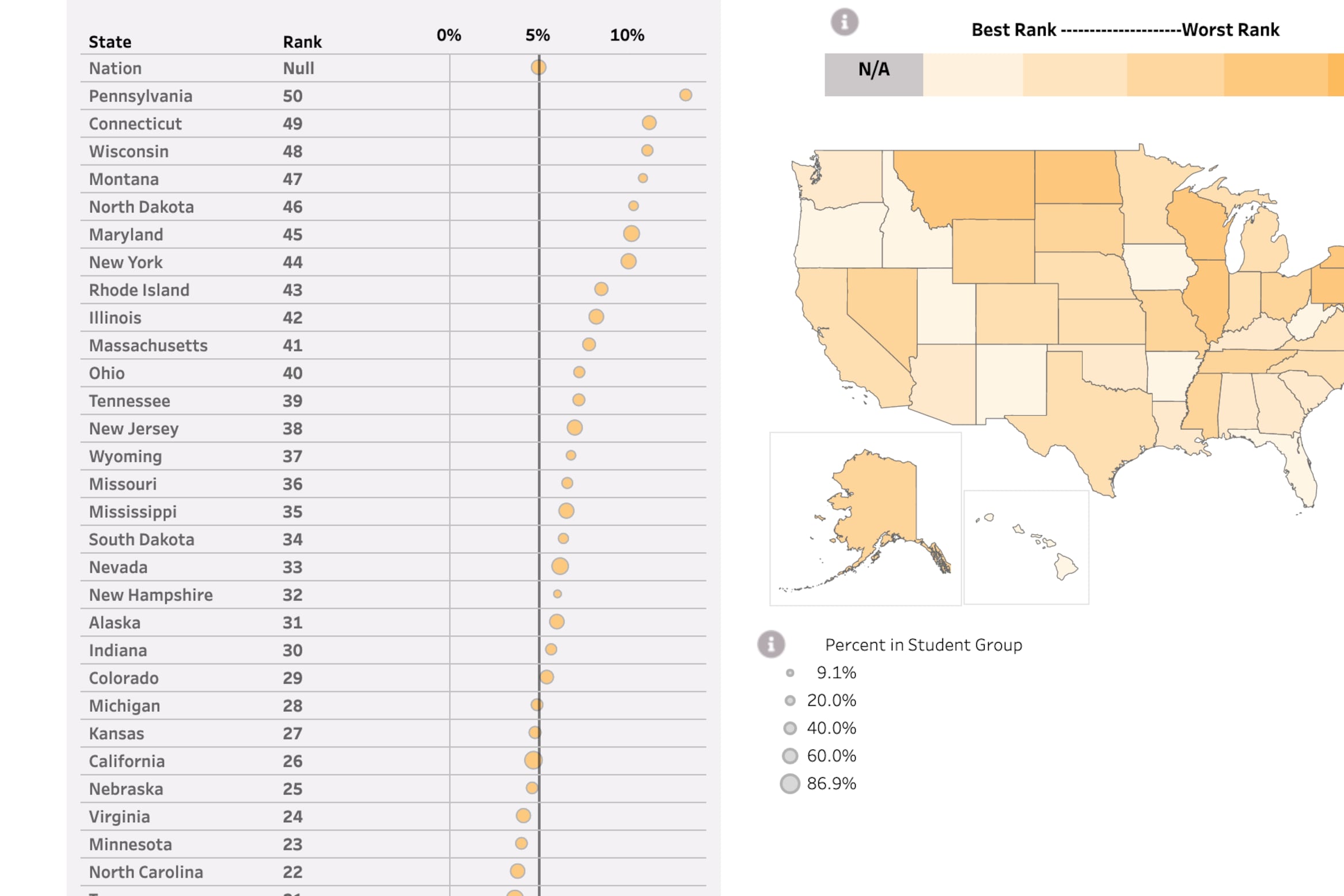Pennsylvania ranks nearly the worst in the nation for educational opportunity gaps based on race and income levels, according to a new report finding a large difference in access to a quality education between students of color and white students.
The state also has a large educational opportunity gap between students from low-income families and their wealthier counterparts, the study showed.
“We know that even within high-poverty schools, there is a race gap,” said David Lapp, the director of policy research for Research for Action, a Philadelphia-based organization focused on issues related to equity in education that produced a dashboard showing the differences in opportunity. Such a gap is not as prominent nationally as it is in Pennsylvania, he said.
According to the group’s state-by-state dashboard and a study of Pennsylvania based on it, racial gaps loom wide here.
Researchers compiled an average opportunity score to rate access to quality education. Pennsylvania scored 65% overall — 70% for white students, 53% for Black students, and 58% for Hispanic students.
Among the 50 states, Pennsylvania ranked 49th in the Black-white opportunity gap, 50th in the Hispanic-white opportunity gap, and 49th in the gap between students from low-income families and their wealthier peers.
“White students are provided greater access to educational opportunity compared to white students in most states, and Black and Hispanics [are provided] less opportunity than in other states,” said Justis Freeman, one of the report’s authors.
What’s known as the opportunity gap widened from 2015-16, when the group released its first dashboard, to 2017-18, the latest data collected by the federal Education Department’s Office for Civil Rights.
While the concentration of Black and Hispanic students in high-poverty schools appears to be a primary factor driving gaps, “racial disparities often exist even within subgroups of schools with similar levels of poverty,” according to a report on Pennsylvania that accompanied the release of the updated dashboard.
In most areas that can be measured, “Pennsylvania is defined by educational inequity,” Lapp said.
Overall achievement data for all students put Pennsylvania among the top half of states on the dashboard, but that ranking masks the wide gaps based on race and income both in achievement and opportunity, he said. The findings “shift the responsibility to policymakers” to tackle the causes of persistent and widespread educational inequity, he said.
The findings are based on federal data collected before COVID precautions shut down campuses. “This is the final baseline for what we know about schools from before the pandemic,” Lapp said.
Nationally, the dashboard showed 63.6% of white students having access to quality education compared with only 54.2% of Black students and 59.5% of Hispanic students. While 64% of students who are not low income had access, only 57.9% of low-income students did, as measured by eligibility for subsidized meals.
Research for Action categorized quality education as having access in three broad areas — credentials and experience of educators, rigor of curriculum, and school climate as measured by data such as absenteeism and frequency of punishments like suspension.
The three areas included 14 indicators.
The Pennsylvania report cited two factors that likely contributed to the state’s wide gaps: Black and Hispanic students are disproportionately enrolled in high-poverty schools while white students are disproportionately enrolled in low-poverty schools. When white students are enrolled in high-poverty schools, those schools tend to score better on the opportunity index than those enrolling mostly students of color.
The release of the updated dashboard comes as Pennsylvania awaits a decision on a challenge to its school funding system, which currently results in the widest spending gaps in the nation between wealthy and poor districts.
Commonwealth Court judge Renée Cohn Jubelirer is expected to release a decision before the end of the year after hearing testimony from educators and experts during a four-month trial. Plaintiffs in the case include six school districts, several parents and two statewide advocacy groups.
Dale Mezzacappa is a senior writer for Chalkbeat Philadelphia, where she covers K-12 schools and early childhood education in Philadelphia. Contact Dale at dmezzacappa@chalkbeat.org






